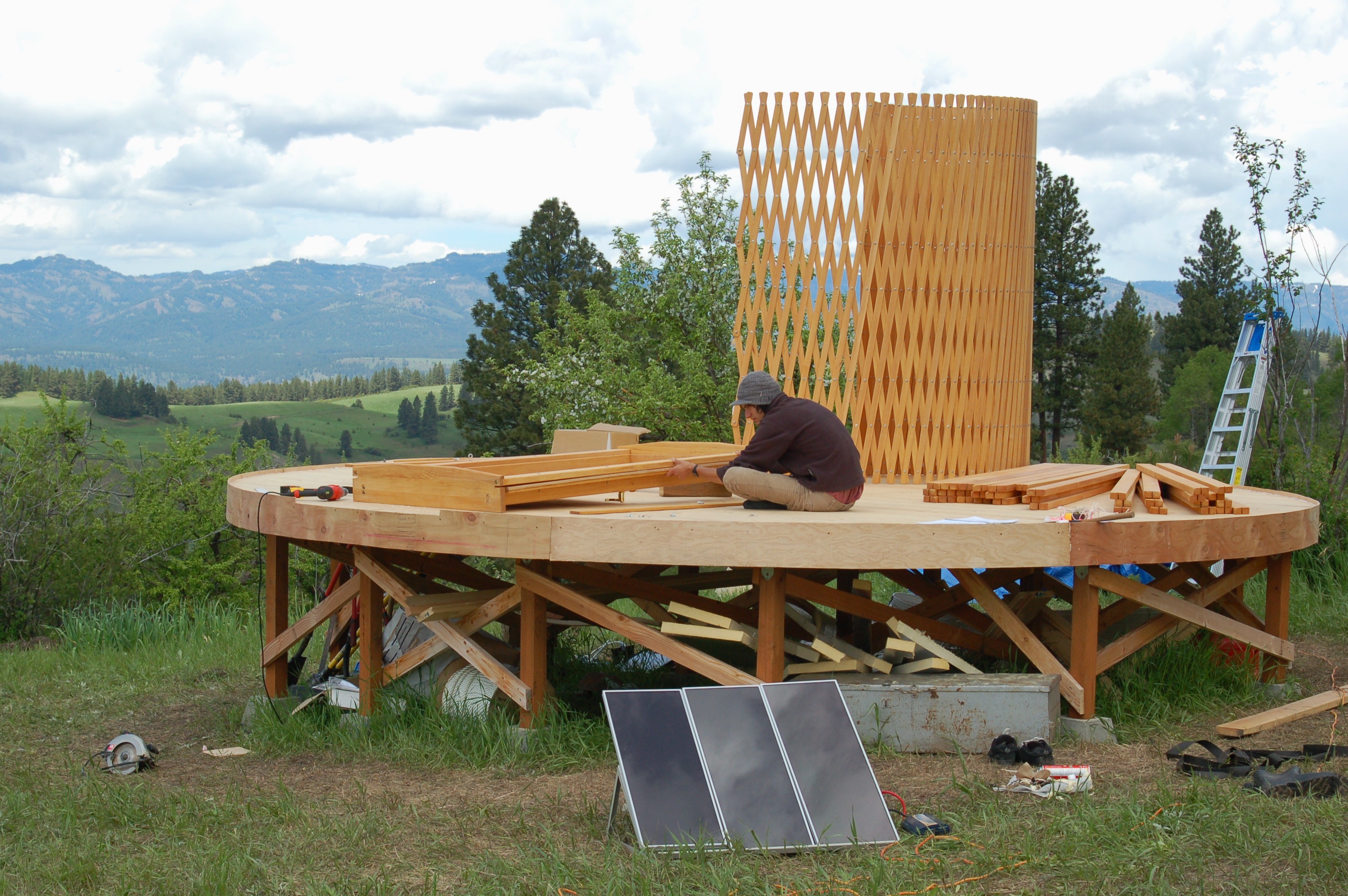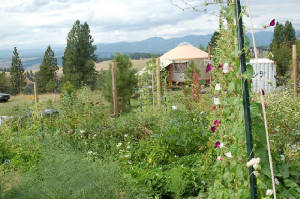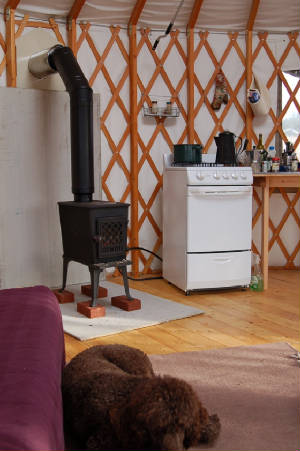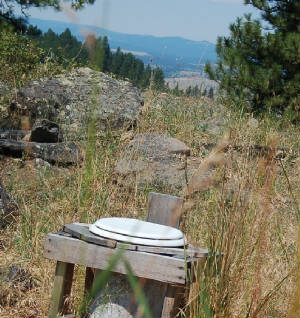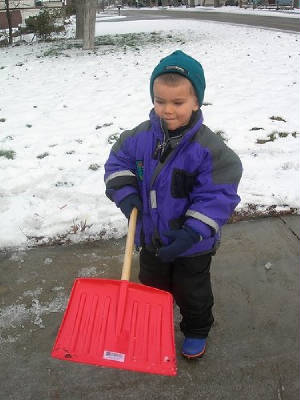 |
||
|
THE SMOKING POET |
||
|
|
||||||||||||
|
A Grammar for Yurt Living By Elizabeth Enslin A few
days before Halloween, I wake to the first snow and stoke the wood stove. Early light reveals a mess inside: paw prints on
the rug, bags of potatoes and garlic piled under the windows, a jumble of dishes and spices on the counter. I pull on my boots
and walk around the outside to look for the espresso maker in the sink. This is why I’m ready to leave in a few days
to winter in Portland. I
imagine how I’ll answer the question that waits for me among friends: “What’s it like living in a yurt.”
“It’s
round, comfortable,” I say. I skip over chaos and list some amenities―futon, bookshelves, propane range,
woodstove, chairs, table. I draw the outside in―the stars visible on clear nights through the dome,
coyote howls and fledgling owl squawks heard through fabric walls. From there, I wander outside to introduce rattlesnakes
under eggplants, bears in apple trees, a cougar on the road. “But
the yurt: what’s it like inside?” “Right.
Well, it’s round. Cozy. Blends with the landscape.” Should I tell how my heart pounds when I drive up over the
rise and see it against the backdrop of the Grande Ronde Canyon and Blue Mountains? “Getting
back to life in the yurt …” “Okay,
it’s round …” š
A shaft
of sunlight illuminates a doe in the orchard below. She chews, watches me watching her, and reaches for another fallen apple.
The haunting glow reminds me why three years ago we decided to anchor our fantasies of rural living to this remote, old ranch
in northeastern Oregon, and why we now spend half of each year in a yurt. Before
building a permanent house, we wanted to sample the seasons, get to know the land and surrounding community, ruminate on retirement.
We considered size and comfort, simplicity and strength, aesthetics and affordability in temporary housing options and agreed
that a yurt promised the best compromise. One practicality clinched the deal: a yurt requires no building permit in Oregon. Like
most contemporary yurts in North America, ours is not the traditional felted version nomads of Central Asia developed to follow
their herds across the grassy steppes. Delivered as a kit, it retains the innovative structure―roof
beams resting on a tension cable over a lattice wall―but replaces felt with synthetic, waterproof materials.
It also includes windows. Over
several weeks from autumn to that rainy spring of the first year, Jerry built a platform and floor while we stayed in a tipi.
Then, in two days he and my son erected the yurt. I excavated wet sod, planted vegetables and steadied beams and ladders when
needed. We
lost a few hours when one of the men (who will remain anonymous) slid off the roof and fell on his head. A return of memory
and mostly sensible speech averted a 50-mile drive to the nearest hospital. Although
the fabric needed more securing, the yurt stood ready on the last day of May,
moments before thunder cracked overhead. We dragged some gear, snacks, and an 85-pound standard poodle inside and closed the
wooden door. We huddled by a propane heater in the cavernous space, inhaled the aroma of new fir flooring, and waited for
disaster. Winds howled and pummeled the shuddering walls with hail. Through what seemed like hours, we marveled at warmth
and dryness. “Not even a leak,” one of us said every few minutes. “Not a single leak.” Since
then, yurt living has become an ongoing dance between filling 314 square feet with homey comforts, conveniences and pleasures,
and yearning for the ever-receding perfection of that first night when the miracle of a dry, empty space was all we wanted. š
Clouds
block the sun again. My fingers grow numb breaking dirty dishes out of ice. The espresso maker isn't here; Jerry must have
washed it last night. Good thing, because the pipes are frozen. I ponder
a fleeting image: an outline of a box. It’s like the one my high school English teacher used to draw on a chalkboard
to explain above, below, in, through, around. Prepositions:
that’s why I can’t answer the yurt question. We don’t live in a yurt; we live around it. Imagine
a photograph of the yurt. If I take it from the south, I’ll have to include the solar panels and the back of a refrigerator
on a small porch. But I’ll frame out other structures―some not so pretty―that
make yurt living enjoyable: a work table, propane camp stove and grill, satellite dish, dining table and chairs, outdoor sink,
and a 20-foot shipping container stuffed with tools and detritus.
Nearby
is a garden enclosed by deer and elk fencing. Short walks away are a five-gallon bucket sawdust toilet, a teepee for guests,
a pump and pressure tank at the spring to push water through black polyethylene pipe to our outdoor faucets, and the official
telephone connection that serves 1,500 feet of unofficial cable. In
summer, when outdoor work and play consume our days, the yurt provides sufficient shelter. We prefer to cook and dine outside.
We enjoy cool morning walks to the latrine and look forward to outdoor showers in late afternoon, when the sun has heated
the water in the unburied pipe. But
by October, the difference between “in” and “around” yawns wide like the canyons that separate us
from our kind neighbors here. š The sun
returns and I see three more deer ambling down the slope above the bare aspens. They stop, stare at me, then continue towards
the apples. I
smell espresso brewing and hear the creak of Jerry folding up the futon. Confident again that this is where I want to live
year-round some day, I grab a clean cup from the dish drainer and head back inside. Perhaps we can talk about a house over breakfast. ~~~~~~~~~~~~~~~~~~~~~~~~~~~~~~~~~~~~~~~~~~~ Elizabeth
Enslin received a 2009 Individual Artist Fellowship award from the Oregon Arts Commission. Her literary nonfiction appears
in The Gettysburg Review, Crab Orchard Review,
Opium Magazine, Fringe Magazine, The Truth About the Fact, In the Mist,
and Oregon Literary Review. She is currently finishing an ethnographic memoir on
living as an anthropologist and family member in ~~~~~~~~~~~~~~~~~~~~~~~~~~~~~~~~~~~~~~~~~~~
Shovel … Truth … Get the Drift … Scoop By Richard VanGrouw Despite a thrown
shoulder and spousal discouragement, I lace old hiking boots and slip into a worn jacket. The back door swings an arc in the
accumulation of new snow, an angel with one wing. As the door latches behind me on cozy homeliness, I find myself in a half-lit
world where sounds are muted, where the dimmest glimmering lights are swollen and fuzzy with refraction. I lift my shovel
from where it leans against the garage, and pause. The tick-tick-tick of falling snow seems louder, more distinct, than automobile
wheels rolling on the avenue. Bane
of the thin-blooded, Up
and down the avenue, I can hear the hum and throb of snow blowers as neighbors conduct their own personal excavations in search
of pavement beneath the drifts. I don’t deny the appeal of internal combustion. However, my affection for the old-fashioned
shovel is not rooted in some tree-hugging granola carbon footprint reduction ideology. My reluctance to invest in power yard
tools is not rooted in eco-extremism. Once upon a summer, at another house in another town, I did nurture such nobility. I
bought a well-used manual push mower for the lawn. When I paid my $15, I ignored the distinct chuckle of the Mr. Fixit who
sold it to me. The prospect of pushing a purring manual mower struck me as romantic and nostalgic and conservative and minimalist,
a whim some latter-day Thoreau might indulge. I sharpened the mower’s blades with a file and soaked its moving parts
with oil. It was heavy and hard to push, but it seemed to work well enough. After a couple of passes, however, it became apparent
that the mower was incapable of navigating the shallowest divot. It stopped short on any unevenness in the turf whatsoever,
bludgeoning my abdomen with its handle. After 30 minutes of toil and sucker punches to the midsection, drenched in sweat and
grease, green and bristling with a coat of grass clippings, roiling in a rage of defeat, I lifted that moribund antique over
my head and swung it down into the sod. I struck again. I began to pound at the lawn, again and again, a modern day John Henry
who had neglected his Prozac. The next day, calm and resolute again, I drove to the nearest hardware store and bought a 7.5-horsepower
self-propelling gas-guzzling Scotts mower that I have used ever since. Perhaps
psychoanalysis is warranted. The origin of my aversion for power lawn tools clearly can be traced to my childhood. In the
household where I grew up, mechanical snow removers were for the rich or the soft. My father didn’t get a snow-blower
until both my brother and I had moved on and out. At that point, Dad retired the only shovel I remember him ever using. It
was a heavy steel model. Its black blade was a shallow convex curve, like a plow. Toward the end of its life, the shovel’s
business edge turned ragged and jagged and rusty, worn by decades of scraping against concrete. Because for my father, no
shoveling job was complete until the pavement was utterly devoid of snow. My
father was a shoveling fundamentalist, a puritan. He pursued his passion for clear, dry sidewalks with the fervor of the born-again.
Every winter’s day after work, and many mornings when time allowed, he was out there in the dark, in his oversized unbuckled
rubber galoshes, hunched, scraping and scooping, always down to bare cement, always with straight, crisp edges where dormant
grass met the sidewalk. An enduring winter memory of my youth is the sound of Dad shoveling in the dark―scrape, silence. Scrape,
silence. Scrape, longer silence. During heavy or prolonged snowfalls, he would head into battle as soon as the first trace
of new snow had gathered. When he came inside between sorties, he stood at the dining room window, staring outside at the
enemy, fists on hips, and sighed, loudly and repeatedly. The
crazy neighbor lady was nearly as obsessive about snow removal. Mrs. Essenberg got along with almost no one, as far as I could
tell. She rented the apartment upstairs in her house, but could never keep tenants. They said she accused them of poisoning
her water and committing other imaginary felonies. I cannot testify to the veracity of those claims, but I know Mrs. Essenberg
lined the windows of her house with aluminum foil, presumably to thwart attempted espionage by her neighbor’s boys.
My father and Mrs. Essenberg were sworn enemies dedicated to preventing encroachment across the front lines of battle. He
seethed―and she knew he seethed―whenever her lawn sprinkler shed droplets on his side of the property line in the summer.
Once she trimmed some branches from a tree that straddled our respective territories and the law had to be summoned to sort
it all out. One
winter brought an especially heavy snowfall. Maybe it was the persistently overcast skies, maybe it was inevitable. But that
winter the latent ire between my father and Mrs. Essenberg came to a head. Her lot and our lot backed up to a municipal alley
that provided access to our garages. A thin strip of neutral territory, perhaps three feet across, separated our garage from
Mrs. Essenberg’s. After a snowstorm on a Saturday, my father and Mrs. Essenberg were alarmed to discover each other
shoveling plow dross in the alley behind their garages. Snow from previous falls was piled precariously high along the peninsular
property line. At some point, Mrs. Essenberg heaved a shovel load on top of this peak; some stray clumps skated wormily down
onto our land. My father witnessed this trespass, scooped his own shovel full and tossed it back over the pile onto Mrs. Essenberg’s
side. Mrs. Essenberg aimed her next shovel load directly at my father, who retaliated, softer sex be damned. And there they
were: Two grown adults, hurling snow at each other in an alley. That story, that vision, is entrenched in family lore. As
a boy I was discouraged from shoveling the sidewalks at our home; my standards of excellence fell well short of house rules.
However, I was good enough for others, so I earned a few dollars and a few blisters shoveling walkways and driveways for neighbors
whose tolerance for mediocrity surpassed that of my family’s. One neighbor down and across Nineteenth Street, Mr. Van
Zylen, paid me $5 on occasion to clear his walks and drive. I had special reason to succeed at this task that went well beyond
a measly five-spot. Behind the perpetually closed and locked door of Mr. Van Zylen’s garage resided a mint condition
1961 Borgward Isabella, a sensuous sports car with a wood-trimmed interior and a flawless creamy complexion. I was a teen
of recent legal driving age, so many of my peers had their own cars, or at least access to one. My situation was decidedly
more pedestrian. Mine was that postmodern American rarity, a one-car family. My life was a gambol. And there was Mr. Van Zylen’s
Borgward, unused and, I forced myself to believe, unwanted. In my vivid imagination, Mr. Van Zylen would take pity on my transportationless
plight and offer me the Isabella for a song―maybe as a trade for shoveling. I dropped hint after obvious hint. I even asked to lavish
the Isabella with a sponge bath in the summer. In hindsight, I suppose I should have felt guilty about coveting another man’s
wheels. Despite increasingly suggestive and transparent hints, Mr. Van Zylen never offered me the car. Eventually my Isabella
fantasy dissolved, I grudgingly rescued a 1972 Chevelle from sure banishment to the junkyard, and Mr. Van Zylen developed
Parkinson’s disease and died. I have no idea what happened to the Borgward. Back
then shoveling to me seemed brute labor, an inglorious means to some inevitably material end. I shoveled the way you take
medicine―do it quick, get it over with, get on with life. It took years and a homeless man named Even
if valuable lessons are eternal, teachers are not. One dark night So
tonight I stand at the top of the driveway and survey the task that confronts me. I listen to the restless muted whine of
snow blowers up and down the glowing avenue and feel the snowflakes stroke my bare cheeks. I grasp the shovel in front of
me and begin to walk slowly toward the street, feeling warm and calm. Perhaps the act is a coping mechanism against futility.
Nature will endure, after all. No matter how meticulously or religiously or often I clear the driveway, even down to the pavement,
and long after I care to do so or am able to do so, the snow will continue to fall. For tonight, even as the snowfall continues,
I relish the calm. Rick VanGrouw is a writer,
editor and recovering journalist. He lives near |
||||||||||||
|
Feedback, submissions, ideas? E-mail thesmokingpoet@gmail.com |
||||||||||||
